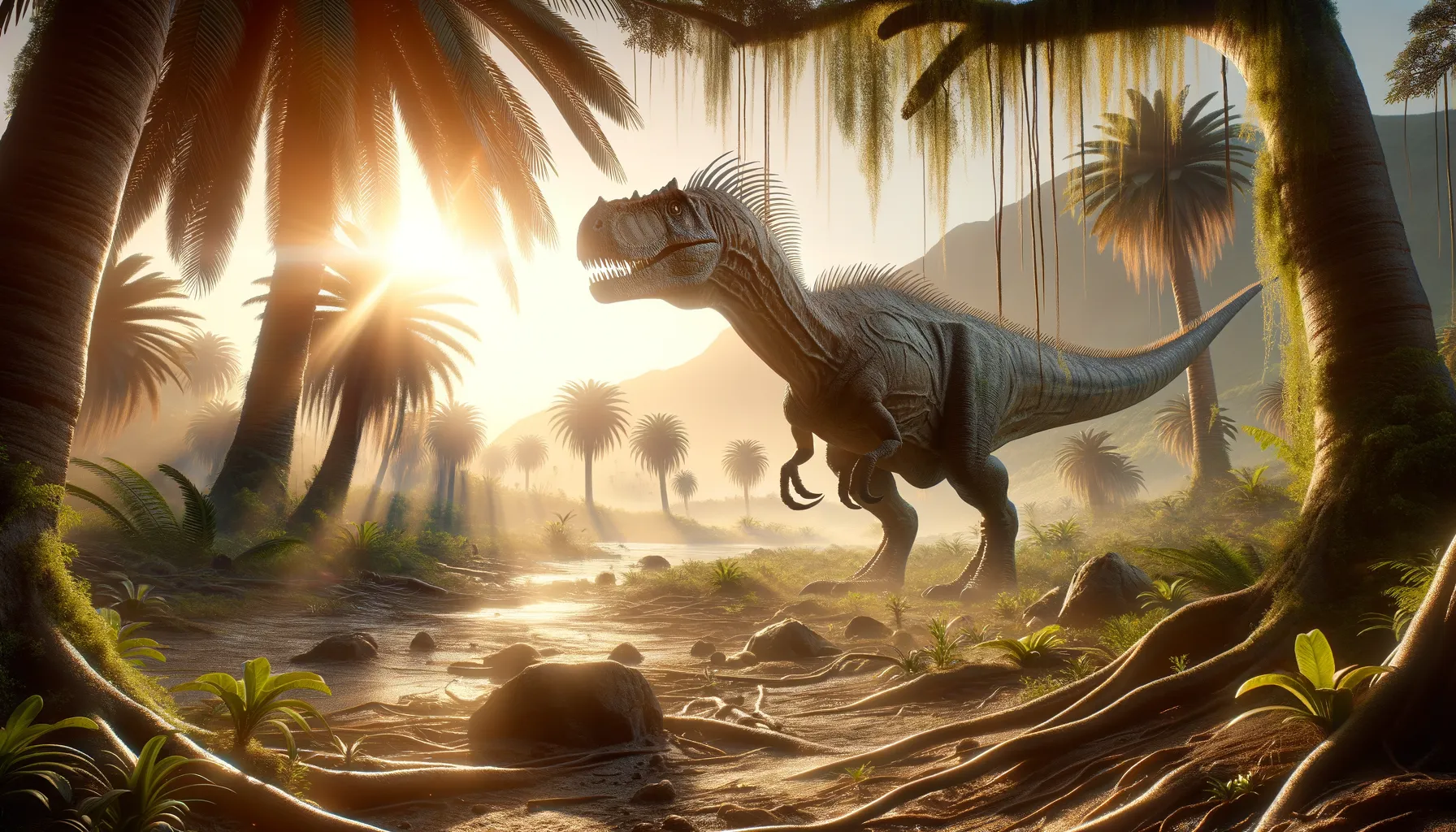
Kukufeldia
An English giant of the Cretaceous era.
Period
Cretaceous
Length
About 6 meters in length.
Height
Roughly 3 meters tall.
Weight
Approximately 1,000 kg.
Kukufeldia was a herbivorous dinosaur from the Early Cretaceous period. It was initially discovered in England, making it an exciting find for paleontologists studying European dinosaur fauna. Known primarily for its large size and plant-eating habits, Kukufeldia adds to our understanding of herbivorous dinosaur adaptations and their ecological roles during this time. Despite being less well-known than some contemporaries, it is significant in its regional context.
Diet
Kukufeldia was primarily a plant eater, consuming a diet rich in ferns, cycads, and other low-lying vegetation. Its teeth were adapted for grinding plant material, which was vital for processing the tough, fibrous plants of its era.
Hunting
Being a herbivore, Kukufeldia did not hunt other animals. It relied on its large size to deter predators, seeking out plant-rich areas to feed in relative safety.
Environmental challenges
Kukufeldia faced significant environmental challenges, including fluctuations in climate and vegetation availability. Sea-level changes during the Cretaceous affected its habitat, occasionally breaking up land areas and creating isolated populations. Predators also posed a constant threat, requiring Kukufeldia to develop strategies for survival, such as group living or defensive behaviors.
Speed
Slow-moving with limited speed capability.
Lifespan
Estimated around 30 years.
First discovery
First discovered in East Sussex, England.
Fun Facts
- Kukufeldia was a plant-eating dinosaur that lived during the Early Cretaceous period approximately 130 million years ago.
- Its name, Kukufeldia, is a playful nod to the area where its fossils were found, in the English county of Sussex.
- Kukufeldia is known from a partial lower jawbone, which makes it a less well-known dinosaur compared to some of its contemporaries.
- The dinosaur is thought to have belonged to the iguanodont family, known for their characteristic large thumb spikes.
- Kukufeldia's fossils were initially misidentified as belonging to a different dinosaur, illustrating how paleontological understanding evolves over time.
- Despite the limited fossils available, Kukufeldia contributes valuable insights into the diversity of early herbivorous dinosaurs.
- It helps researchers understand the spread and adaptation of dinosaurs in what is now Europe during the Cretaceous period.
Growth and Development
Kukufeldia likely experienced rapid growth periods during its early years to quickly reach a size that deterred predators. This growth was supported by an abundant supply of vegetation. As it matured, growth would slow, focusing instead on maintaining its body and reproductive capabilities.
Habitat
The habitat of Kukufeldia included lush, verdant areas brimming with plant life. These regions would have been dotted with conifers and ferns, offering ample food and shelter. Seasonal wet and dry periods might have influenced migration patterns and resource distribution. Kukufeldia thrived in regions with a stable food supply and adequate water sources.
Interaction with other species
Interactions with other species were likely centered around competition for food and resources. Although Kukufeldia coexisted with carnivorous dinosaurs, it maintained a mostly distant relationship with them. It may have formed loose associations with other herbivores to help protect against predators, though such interactions were mainly pragmatic rather than social bonds.
Natural lifespan
Kukufeldia might have lived naturally up to 30 years if it survived predation and disease.
Reproduction
Reproductive habits likely involved egg-laying, with nests possibly built in concealed or protected areas to guard against predators. Mating rituals might have included displays of size or strength, and potential parental investment could have assisted offspring in their critical early life stages. Survival of the young was the primary focus, given environmental threats.
Social behaviour
Kukufeldia potentially exhibited some levels of social behavior, such as group feeding or defensive posturing against predators. Its herbivorous nature might have led to loosely formed herds, enhancing safety through numbers. However, such social arrangements would have been fluid, with individuals joining or leaving based on personal needs or environmental changes.
Fossil locations
Fossils of Kukufeldia have been predominantly found in the Wealden Group of East Sussex, a location known for revealing rich Cretaceous deposits. The remains have provided valuable insights into the Cretaceous period's faunal diversity in this part of ancient Europe. Its discovery contributes to the broader understanding of Early Cretaceous dinosaur populations in what is now modern-day England.
